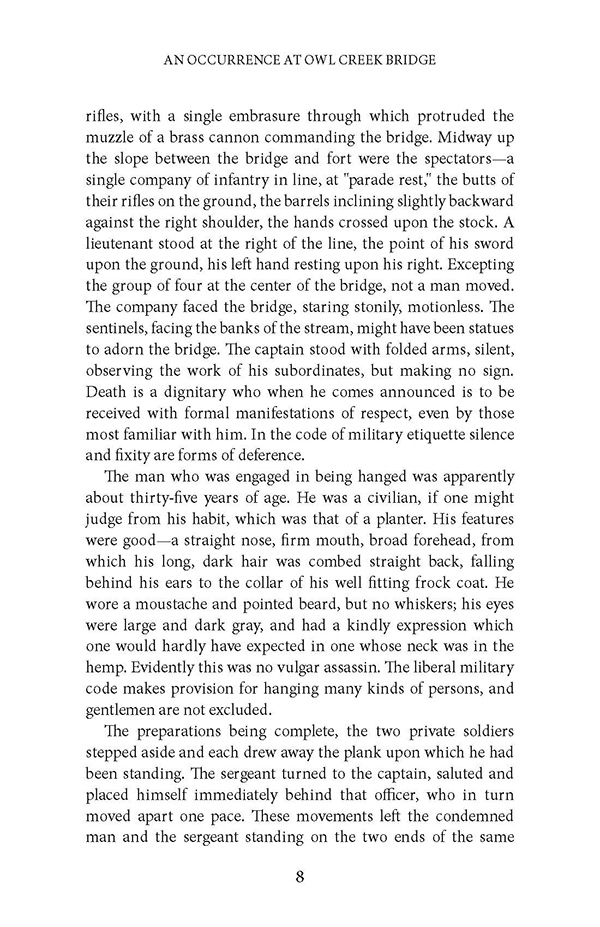
Therefore, the narrator’s point of view greatly affects the story’s events as well as the internal and external development of characters.Ħ Point of View Types of point of view include first person: told by a character in the work whose knowledge is limited to his or her own experiences third-person omniscient: told by a voice outside the story who reveals the thoughts and feelings of all the characters An Occurrence at Owl Creek Bridgeĥ Point of View Because the narrator is the voice that tells a story, the reader knows only what the narrator is able to tell. When does it make sense to look for a way out, and when is it time to accept the inevitable?Ĭlick on the title to play the trailer.

Classify each response as useful or destructive. INTRODUCING THE SHORT STORY Can we escape the INEVITABLE? DISCUSS In a small group, list ways people respond when faced with a bad situation they cannot change. Standing on an isolated, heavily guarded bridge, with a noose around his neck, the protagonist is doomed. INTRODUCING THE SHORT STORY Can we escape the INEVITABLE? “An Occurrence at Owl Creek Bridge” opens with an execution about to take place. The Owl Creek Bridge suggests connection and transition.Short Story by Ambrose Bierce Introducing the Short Story with Literary Analysis: Point of View Reading Skill: Analyze Structure Vocabulary in Context VIDEO TRAILER Reality and illusion operate side by side in “An Occurrence at Owl Creek Bridge,” and until the end of the story, we aren’t aware of any division between them-Farquhar’s illusion is, for us as readers, reality. The story’s structure, which moves from the present to the past to what is revealed to be the imagined present, reflects this fluidity as well as the tension that exists among competing notions of time. “An Occurrence at Owl Creek Bridge” is an elaborately devised commentary on the fluid nature of time. Several adaptations of "An Occurrence at Owl Creek Bridge" have been produced.

Set during the American Civil War, "An Occurrence at Owl Creek Bridge" is the story of Peyton Farquhar, a Confederate sympathizer condemned to death by hanging from Owl Creek Bridge. The story, which is set during the Civil War, is famous for its irregular time sequence and twist ending.

Originally published by The San Francisco Examiner in 1890, it was first collected in Bierce's 1891 book Tales of Soldiers and Civilians. "An Occurrence at Owl Creek Bridge" or "A Dead Mans Dream" is a short story by American author Ambrose Bierce (1842–1913).


 0 kommentar(er)
0 kommentar(er)
